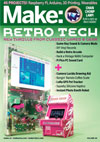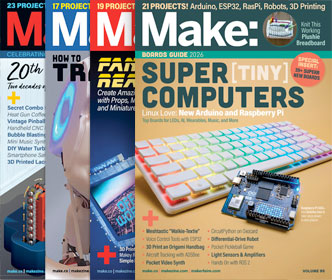This article incorporates, in modified form, material from the not-yet-published Illustrated Guide to Forensics Investigations: Uncover Evidence in Your Home, Lab, or Basement.
The title of this session is actually a misnomer. In the absence of DNA testing, hair can never be more than class evidence. Based purely on visual examination, the most that a forensic scientist can state definitively is that two hair specimens are consistent with each other in every respect, but not that those specimens are certain to have originated from the same individual. Individualizing hair specimens requires not just a DNA match, but a nuclear DNA match.
Despite the fact that visual examination of hair technically provides only class evidence rather than individual evidence, hair evidence testimony has been widely accepted by courts since the early 20th century and has been used to convict thousands of criminals of serious crimes, including murder and kidnapping. Many of those criminals were subsequently executed or sentenced to long prison terms.
Was accepting this evidence a miscarriage of justice? Not necessarily, because although hair cannot be individualized without DNA testing, it can be closely classified by comparing the specific characteristics of known and questioned specimens. If the questioned and known specimens are entirely consistent, a forensic scientist may testify to that fact, which becomes just one more supporting piece of evidence in the prosecution’s case. (Although no one should ever be convicted based solely or primarily on such class evidence as hair, there are unfortunately many such convictions in the literature; these were truly miscarriages of justice.)
Because non-DNA hair evidence testimony inevitably depends strongly on the subjective opinion of the expert witness, it’s important that the witness have extensive experience in visual comparison of hair specimens–not just hundreds of comparisons but thousands or tens of thousands. Only with such experience is it possible to make valid judgments, because the morphology of hair varies, not just between individuals or somatic regions, but between specimens from the same somatic region of the same individual. Understanding these variations is key to learning to interpret visual hair evidence properly.
Individual characteristics are most pronounced in hair from the scalp. As we learned in Laboratory 6.2, the macroscopic and microscopic characteristics of scalp hair can differ noticeably from region to region. A hair from your crown, for example, is likely to differ visually from a hair from your forehead, and even two closely adjacent hairs may exhibit noticeable variations.
Despite this variation, scalp hair is prized by forensic scientists because it often has sufficient individual characteristics to make it easily classifiable. For example, by examining scalp hair, forensic scientists can often make a strong inference about the race of the individual from whom the specimen was obtained. Such characterizations are often more difficult or impossible for pubic hairs, and in particular for hairs from other somatic regions, such as axillary hairs. Figure 6-11 shows a typical human scalp hair at 100X magnification.
Figure 6-11. A human scalp hair at 400X
In this lab, we’ll examine the characteristics of hair specimens from different individuals and different somatic regions. This session is open-ended. You can learn a great deal in only one or two lab periods, but you can easily spend literally years without exhausting the learning opportunities. Even if you devote only one lab period to this work, you’ll gain an appreciation for the expertise that is developed over the course of years by professional forensic hair examiners.
Required Equipment and Supplies
- goggles, gloves, and protective clothing
- stereo microscope, loupe, or magnifier
- compound microscope (100X and 400X, with ocular micrometer)
- specimen storage containers (as required)
- microscope slides and coverslips (many; see Substitutions and Modifications)
- disposable pipettes (as required)
- ruler (graduated in mm)
- forceps or tweezers
- mounting fluids (see Substitutions and Modifications)
- colorless nail polish and acetone (for scale casts)
- human hair specimens (see Procedure section)
All of the specialty lab equipment and chemicals needed for this and other lab sessions are available individually from the Maker Shed or other laboratory supplies vendors. Maker Shed also offers customized laboratory kits at special prices, and a wide selection of microscopes and microscope accessories.
 CAUTIONS
CAUTIONS
Although none of the activities in this lab session present any significant risks, as a matter of good practice you should always wear splash goggles, gloves, and protective clothing when working in the lab, if only to avoid contaminating specimens. Obviously, you may need to work without goggles when using a microscope or magnifier to examine specimens.
Substitutions and Modifications
- You’ll need a lot of microscope slides and coverslips for this lab session, whether or not you decide to mount some or all of your specimens permanently for later use as reference standards. Even if you do temporary wet mounts, you’ll want to retain them until you’ve finished the lab session so that you can compare all specimens, so plan on having 25 to 100 or more microscope slides and coverslips available.
- For temporary wet mounts, you can use distilled water (RI ~ 1.33), although glycerol (RI ~ 1.47), castor oil (RI ~ 1.48), or clove oil (RI ~ 1.54) is a closer match for the refractive index of hair. Permount, Canada balsam, or a similar mounting fluid can be used to make permanent mounts.
Procedure
Request hair specimens from several people. Use the following guidelines in deciding which specimens to request:
- Maximize the range of specimens by requesting them from persons of different ages, sexes, and races. (If possible, obtain infant hair specimens for comparison with adult specimens.)
- Try to obtain specimens from at least one person with brown or black hair, one with red or blond hair, one with gray hair, and one with dyed hair. Make sure to ask each person who provides scalp hair specimens if his or her hair color is natural, and whether or not any treatment such as a permanent has been applied to the hair specimen.
- Clipped specimens are fine for most of your specimens. Ask the person providing the specimen to trim the hair as closely as possible to the skin.
- From each person, request specimens from as many somatic regions as the person is willing to provide–scalp, mustache, beard, axillary, arm, chest, abdomen, pubic, and leg, as applicable.
- Some people who willingly provide a specimen of scalp hair may balk at providing specimens from other areas of their bodies; use your best judgment in deciding who and how to ask, emphasize that you are asking in the spirit of scientific inquiry, and accept gracefully what is offered.
- Provide each of your volunteers with as many specimen containers as necessary. Pre-label each group of containers with a number to identify the person who is providing the specimens. (You can also use the person’s initials, but many people will feel more comfortable with a nice anonymous number.) Within the numbered group, pre-label each container with the somatic region of the hair it will contain.
- Although one hair is acceptable as an exemplar, ideally you want at least two or three hairs of each type, and more is better.
- Begin by doing full macroscopic comparisons of specimens from each of your own somatic regions, followed by full wet-mount microscopic comparisons and, if you have time, scale-cast comparisons. Log detailed descriptions of each specimen in your lab notebook and/or in Table 6-8 and, if possible, shoot images for subsequent comparison.
- Repeat step 1 for each other person from whom you were able to obtain specimens from two or more somatic regions.
- Compare and contrast the differences and similarities of hair specimens across somatic regions from the same individual.
- Compare scalp hair specimens from the different individuals, noting any characteristics shared by the scalp hair specimens.
- Repeat step 4 for specimens from at least one other somatic region of different individuals, ideally pubic hair, which is often forensically significant.
- Compare and contrast the differences and similarities of hair specimens across individuals from the same somatic region.
Table 6-8. Individualize Human Hair specimens – observed data
| # | Source | Observations |
|---|---|---|
| 1 | ||
| 2 | ||
| 3 | ||
| 4 | ||
| 5 | ||
| 6 | ||
| 7 | ||
| 8 | ||
| 9 | ||
| 10 | ||
| 11 | ||
| 12 | ||
| 13 | ||
| 14 | ||
| 15 | ||
| 16 | ||
| 17 | ||
| 18 | ||
| 19 | ||
| 20 |
Review Questions
Q1: What macroscopic characteristics did you find most useful for differentiating human hair specimens from different subjects?
Q2: What microscopic characteristics did you find most useful for differentiating human hair specimens from different subjects?
Q3: Based on examining specimens from various subjects, do you think it is possible to estimate the approximate age of the person from whom the specimen was obtained? If so, how?








Today hair fall is a big problem before us.There should be proper care and knowledge.The above trick is nice one.I will share it to my Facebook friends.
Thanks For This Blog.
Today hair fall is a big problem before us.There should be proper care and knowledge.The above trick is nice one.I will share it to my Facebook friends.
Thanks For This Blog.